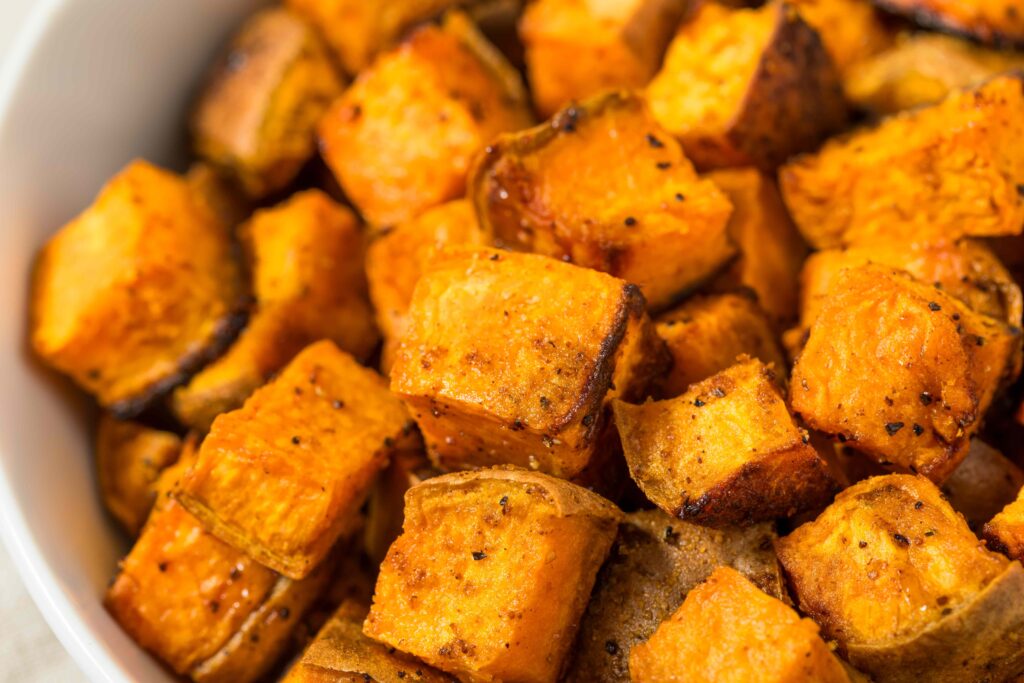Packed with potassium and vitamins A and C, sweet potatoes are as nutritious as they are versatile. With the season in full swing, here’s how dietitians said they recommend preparing them for maximum health benefits.
Compared to many vegetables, sweet potatoes are rich in carbohydrates, containing around 9 grams of sugar in a medium-sized spud. But if you’re looking to reduce a potential blood sugar spike—especially if you have prediabetes or type 2 diabetes—boiling them may help, said Seema Shah, MPH, MS, RD.
“Boiling sweet potatoes can lower their glycemic index,” she explained, referring to the rate at which a food raises blood sugar.
When sweet potatoes are boiled, some of the starches break down, promoting the formation of resistant starch, which slows sugar absorption and may help with blood sugar control.
One easy idea: turn boiled sweet potatoes into a blended soup. Shah recommends combining them with carrots, onion, celery, and broth. “After boiling all the ingredients down and blending it, I add in lots of seasonings and a splash of coconut milk,” she told Health.
Roasting stands out as a cooking method that enhances sweet potatoes’ natural dessert-like quality—without adding any sugar.
“I prefer roasting sweet potatoes because it caramelizes them more than the other methods, helping bring out the natural sweetness,” Sarah Schlichter, MPH, RDN, dietitian of record with the North Carolina Sweetpotato Commission, told Health. Cooking at high temperatures, around 400°F or higher, causes chemical reactions that turn some of sweet potatoes’ starches into sugars.
Roasting in healthy oils like olive or avocado also adds monounsaturated fats—the kind associated with cardiovascular benefits such as lower cholesterol and a reduced risk of heart disease and stroke.
Sweet potato skin might not always make it into popular recipes, but it’s completely edible—and worth keeping. In fact, Shah recommends leaving it on for an extra boost of fiber and nutrients. Per 100 grams, sweet potato with skin contains 3.3 grams of fiber, compared to 2.5 grams in the same amount of peeled flesh. The skin also provides extra magnesium, phosphorus, and potassium.
If you’re not keen on eating the whole tuber with skin, try leaving it on smaller pieces instead. Roasted, unpeeled sweet potato chunks seasoned to your taste may be a more enjoyable way to enjoy the benefits.
The wide, long shape of sweet potatoes makes them an ideal vehicle for stuffing with other healthy ingredients. Start by baking a sweet potato until tender. When cool enough to handle, registered dietitian Caroline Thomason Bunn, RD, recommends filling it with your favorite protein, other vegetables, and good-for-you fats like sliced avocado or a sprinkle of cheese.
Stuffing your tubers with minimally processed foods will bring the most benefits—research shows a diet of mostly whole foods improves cardiometabolic health and promotes weight loss.
When you think “smoothie,” sweet potatoes might not be the first ingredient that comes to mind—but they actually pair better than you’d expect, Sclichter noted.
“Blending cooked, cubed sweet potato into smoothies is a great way to add a plethora of nutrients,” she told Health.
If you’ve made boiled or roasted sweet potatoes for dinner, save some in a sealed container in the fridge. Then blend them with frozen banana for a creamy texture and an extra punch of potassium, an under-consumed nutrient that has been linked with lower blood pressure.
Another tip to make your smoothie as nutritious as possible: Include a source of fat, such as yogurt, milk, or almond butter, to ensure you absorb sweet potatoes’ fat-soluble vitamin A.


